#fir tussock moth
Note



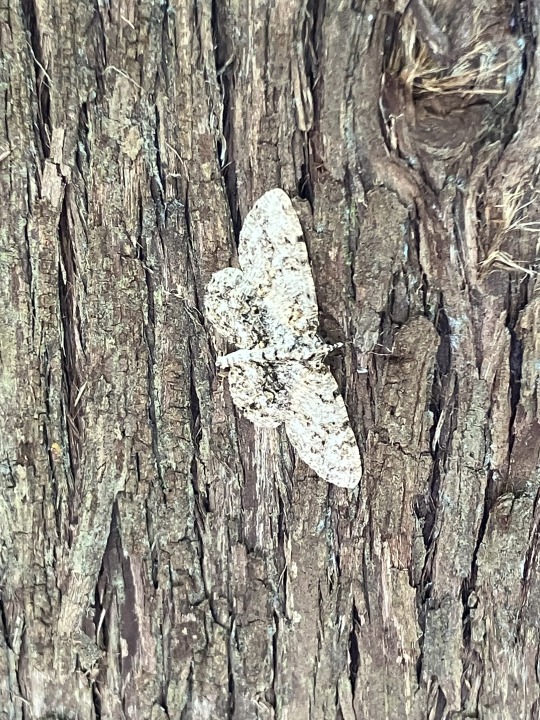
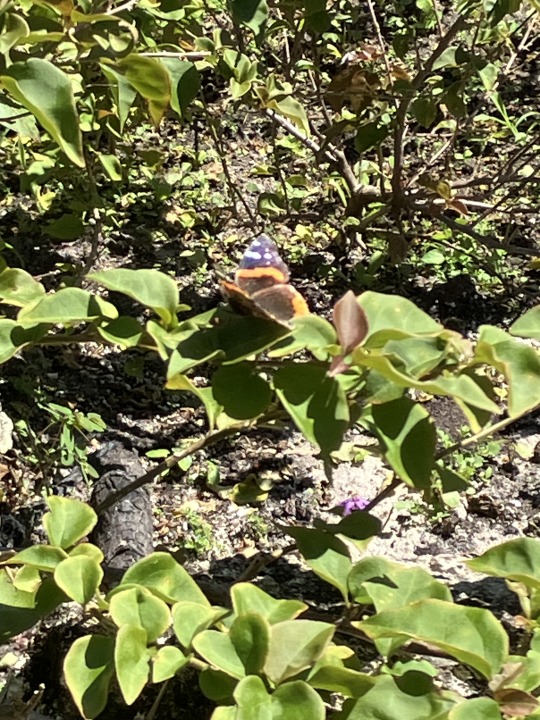
there were SO many caterpillars
All found in Cedar Lake Gardens, FL; if the last one can’t be ID’d no worries, I was following it for ages just to get the photo so it’s not the best shot 😅
Great group of children! The first and second photos show a forest tent caterpillar and a tussock moth caterpillar in the genus Orgyia, probably a fir tussock moth, Orgyia detrita. Third photo is another forest tent caterpillar and the moth is a geometer moth, but I don't recognize the species. Last dude is a red admiral!
#just-your-average-cryptid#insects#bugs#submission#moth#forest tent caterpillar moth#tussock moth#fir tussock moth#geometer moth#butterfly#red admiral#caterpillar#larva
103 notes
·
View notes
Text
"how do you have 15K observations on iNaturalist???"
well you see, I'm autistic and I like taking pictures and learning about stuff and unlike neurotypical people I am not afraid to crouch in the middle of the sidewalk to take pictures of a rolly polly or squint up at the sky taking pictures of a speck of a bald eagle even if other people think I look ridiculous
anyways look at this epic caterpillar I found on the crabapple tree
Edit: It's a fir tussock moth! Orgyia detrita!
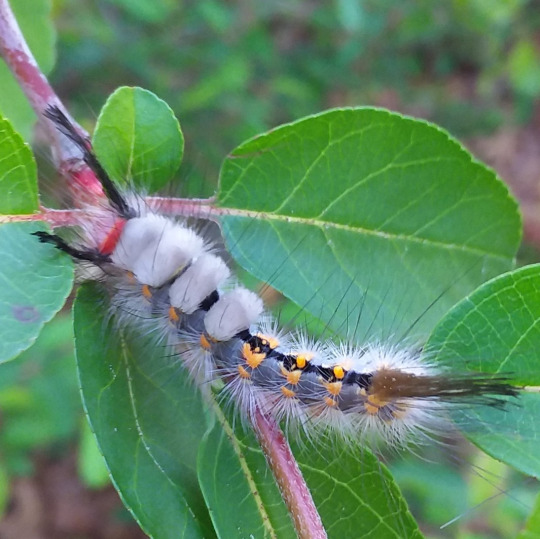
[ID: A cropped photo of a fir tussock moth caterpillar sitting on the branch of an apple tree.
The caterpillar is covered in hairs of different lengths and colors, with four thick white clumps of hair near its head, which is red and has two longer, antenne like clusters of black hair.
It has a black stripe down its back, a grey and light orange striped body, white hairs bristling out by its feet, and from its back end a long section of brown hairs sticking out like a tail.
The stem of the apple tree is light red and slightly fuzzy, with small, rounded green, softly serrated leaves.
End ID.]
#Rjalker takes pictures#bugs#insects#caterpillars#baby bugs#baby animals#not a baby tree though!!! i has flowers!!!!#Rjalker does iNaturalist#iNaturalist#fir tussock moth#Orgyia detrita#moths#moth caterpillars
6 notes
·
View notes
Text
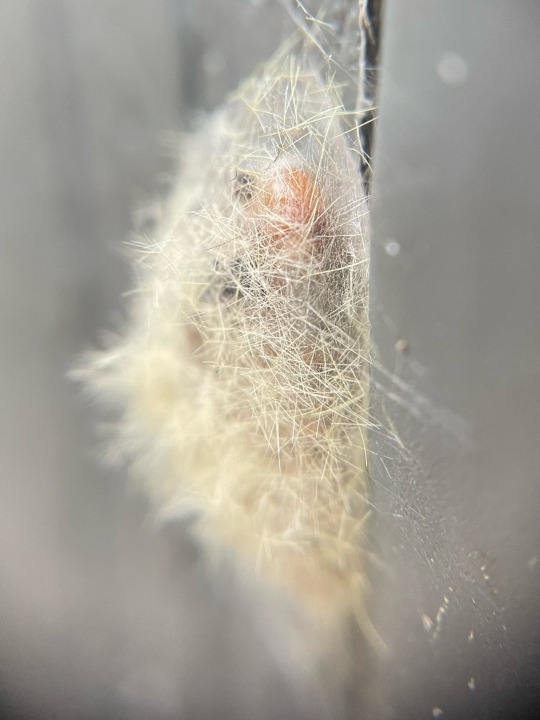


Tussock caterpillar cocooning itself within a protective layer of its old hairs. Reduce, reuse, recycle.
3 notes
·
View notes
Text

caterpillar friend
2 notes
·
View notes
Text

Fir tussock moth caterpillars looking deceptively cute. These guys are covered in painful stinging hairs and like to hang out on playgrounds and anywhere you're about to put your hand lol
2 notes
·
View notes
Text
December 25th, 2023
Merry Christmas!


White-Marked Tussock Moth (Orgyia leucostigma)
Distribution: Found throughout eastern North America, as far west as Texas in the south, and Alberta in the north.
Habitat: Mainly found in forests, plantations and urban areas, wherever their host trees can be found.
Diet: Herbivorous generalists; found on a very wide host of coniferous and deciduous trees, including apple, birch, black locust, cherry, elm, fir, hackberry, hemlock, hickory, larch, oak, rose, spruce, chestnut, and willow. They have over 140 host plants.
Description: While adults are fairly inconspicuous, this moth's larvae are easily recognizable, with long, antler-like setae on either side of their head and a bright red head, giving them a striking resemblance to Santa's most mistreated reindeer. While they do give these caterpillars a pretty appearance, the setae may cause allergic reactions when they come into contact with skin, resulting in contact dermatitis.
The white-marked tussock moth is unfortunately considered a pest to many tree species. Outbreaks are common on certain host trees, such as Manitoba maple and urban elms, which can defoliate trees almost completely.
Images by Ken Childs and Nolie Schneider.
2 notes
·
View notes
Text

R6, State & Private Forestry, Forest Health Protection
1965. Evaluating cattle for DDT. Douglas-fir tussock moth control project.
Altnow Ranch. Burns, Oregon.
Evaluating cattle for DDT. Douglas-fir tussock moth control project.
Altnow Ranch. Burns, Oregon.
Photo by: Unknown
Date: 1965
Credit: USDA Forest Service, Region 6, State and Private Forestry, Forest Health Protection.
Collection: Region 6, Forest Health Protection slide collection; Regional Office, Portland, Oregon.
Image provided by USDA Forest Service, Pacific Northwest Region, State and Private Forestry, Forest Health Protection: www.fs.usda.gov/main/r6/forest-grasslandhealth
Public Domain Mark 1.0
#harney county#oregon#eastern oregon#harneycounty#the great pnw#the old west#oregonoutback#pnw#oregon outback#burns oregon#cowboy#cattle#ranch life#ranching
3 notes
·
View notes
Photo
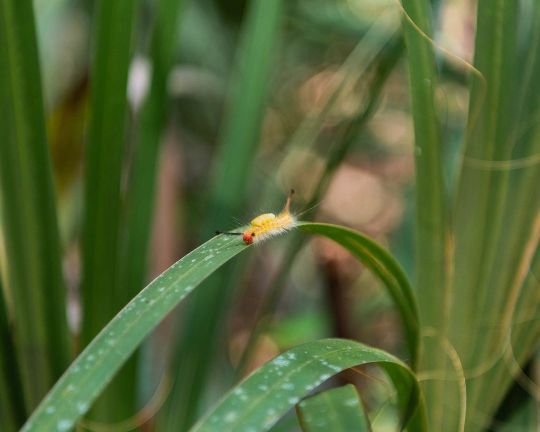
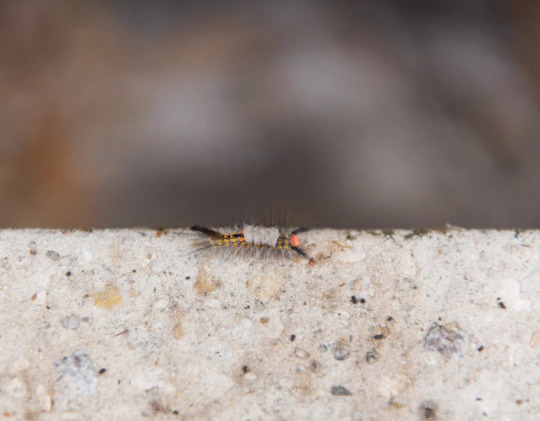
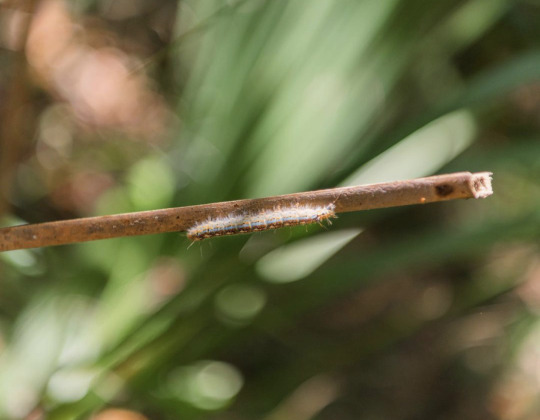




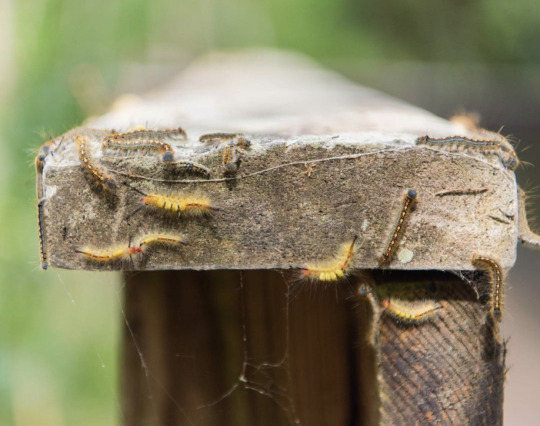

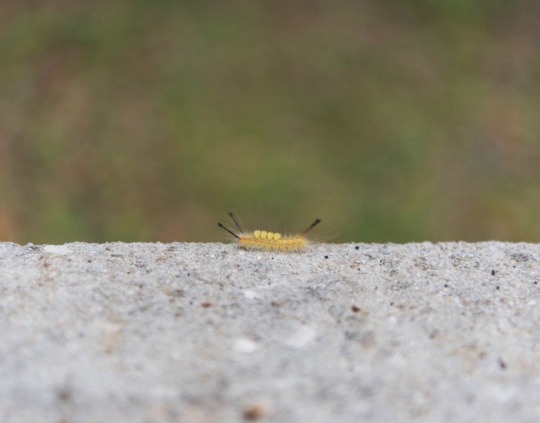
As a follow-up to my post about moths last week, here are some of the baby moths I ran into this spring at one of my favorite state parks! 🥰 🐛 1 Fir tussock moth caterpillar (Orgyia detrita - light form) 2 Fir tussock moth caterpillar (Orgyia detrita - gray form) 3 Forest tent moth caterpillar (Malacosoma disstria) 4 Fir Tussock Moth caterpillars 5 No clue. Any of my ento friends know? 6 Forest tent moth caterpillars 7 Forest tent caterpillar moths and Fir tussock moth caterpillars 8 Forest tent caterpillar moths and Fir tussock moth caterpillars 9 Forest tent caterpillar moths and Fir tussock moth caterpillars 10 Fir Tussock Moth ☀️ 🐛 🔎 #florida #bug #insect #moth #lepidoptera #macro #nature #naturelovers #nature_brilliance #fiftyshades_of_nature #moths #tussockmoth #caterpillars #forest #firtussockmoth #Orgyiadetrita #foresttentmoth #Malacosomadisstria #hilllsboroughriver #floridastateparks @fl.stateparks @visitflorida @visittampabay @hillsboroughfl @timperlinetampa @floridastateparksfoundation (at Hillsborough River State Park) https://www.instagram.com/p/Cg69RXeulJM/?igshid=NGJjMDIxMWI=
#florida#bug#insect#moth#lepidoptera#macro#nature#naturelovers#nature_brilliance#fiftyshades_of_nature#moths#tussockmoth#caterpillars#forest#firtussockmoth#orgyiadetrita#foresttentmoth#malacosomadisstria#hilllsboroughriver#floridastateparks
0 notes
Text
Insecticides and pesticides used on fraser firs

#Insecticides and pesticides used on fraser firs full
#Insecticides and pesticides used on fraser firs code
tip moth, Douglas-fir tussock moth, eastern spruce. In fact, in talking with county agents, we estimated that at least 4,000 acres of Fraser fir Christmas trees were treated in the fall and will hopefully skip a twig aphid treatment. Contact insecticides may not reach leafminers in their tunnels and. We comply with the Federal Trade Commission 1998 Children’s Online Privacy Protection Act (COPPA). Many growers treated last fall with insecticides and are hoping to get twig aphid control this spring from those fall sprays. Germinating Fraser fir seed and young seedlings with expanded cotyledons.
#Insecticides and pesticides used on fraser firs code
The 4-H Name and Emblem have special protections from Congress, protected by code 18 USC 707. contained specific recommendations for herbicides and pesticides as well as. Reference to commercial products or trade names does not imply endorsement by MSU Extension or bias against those not mentioned. Chlorpyrifos 4E insecticide forms an emulsion when diluted with water and is suitable for use in all conventional spray equipment. This information is for educational purposes only. Quentin Tyler, Director, MSU Extension, East Lansing, MI 48824. As we learn more, IPM practices will continue to become more efficient and reduce pesticide use still further. This practice of ‘pulling’ seedlings declined as seed production allowed for growing trees in nurseries. The balsam woolly adelgid (BWA) is a seri-ous pest of true firs, Abies spp., and annually kills thousands of Fraser fir (Abies fraseri Pursh.) in the Southern Appalachians. FRASER FIR Product: Christmas trees Plant parts used: Seeds and seedlings Nontimber Uses Originally, Fraser fir seedlings were dug from natural forests to be replanted in Christmas tree farms and grown until merchantable. Pest management surveys of growers have documented that pesticides have been reduced by almost 75 from 2000 through 2013. Keywords: Adelges picea, Fraser fir, Abies fraseri, insecticides, insecticidal screening, field bio-assay. Issued in furtherance of MSU Extension work, acts of May 8 and June 30, 1914, in cooperation with the U.S. The good news is that growers are adapting IPM and reducing pesticide use in NC Fraser fir Christmas trees. DDT was first synthesized in 1874 by the Austrian chemist Othmar. Michigan State University Extension programs and materials are open to all without regard to race, color, national origin, gender, gender identity, religion, age, height, weight, disability, political beliefs, sexual orientation, marital status, family status or veteran status. Originally developed as an insecticide, it became infamous for its environmental impacts.
#Insecticides and pesticides used on fraser firs full
MSU is an affirmative-action, equal-opportunity employer, committed to achieving excellence through a diverse workforce and inclusive culture that encourages all people to reach their full potential.

0 notes
Text
The Ordinary Wooly Grey Moth has a Cool, Colorful Caterpillar
The Ordinary Wooly Grey Moth has a Cool, Colorful Caterpillar tells readers why this little, colorful caterpillar is so cool. It compares it with another colorful caterpillar and shows readers a closeup photo of wooly grey caterpillar.
Inching Along
Back in the spring of 2021, I made a little foray into the woods and found a couple of cool caterpillars in the trees there. One was the fir tussock moth caterpillar (Orgyia sp.), known for it’s beauty and it’s venomous hairs that can cause a painful, red rash if touched. The other was the wooly grey moth caterpillar (Lycia ypsilon). It is an equally gorgeous little creature, but…
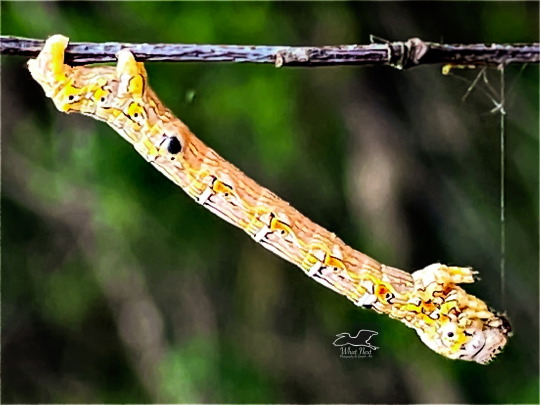
View On WordPress
#caterpillar photography#colorful caterpillars#Florida insects#Florida moth caterpillars#Florida moths#Florida wildlife#Florida wildlife photographs#grey moth caterpillars#grey moths#inchworms#insect photographs#insect photography#insects#moth caterpillar#moth photographs#moth photography#moths#nature#nature photographs#nature photography#orange and yellow caterpillars#photography#wildlife#wildlife photographs#wildlife photography#wooly grey moth#wooly grey moth caterpillar
0 notes
Photo
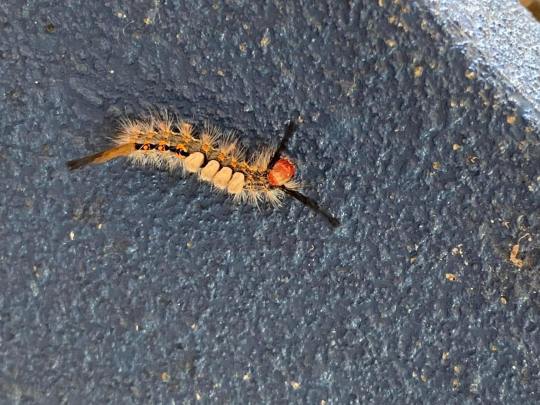
@honeymama-bunbun submitted: Hello! I hope y'all are well ^^! A family friend was at a wedding in Texas recently and saw this beautiful thing!! I was wondering if you could help identify :3? Thank you so much!
Hello! I sure can. It’s a tussock moth caterpillar in the genus Orgyia, most likely a fir tussick moth, Orgyia detrita :)
#insects#bugs#submission#moth#caterpillar#larva#tussock moth#fir tussock moth#Orgyia#tussock moth caterpillar
67 notes
·
View notes
Text
Prefixes
Black
Ant
Auk
Avocet
Badger
Bat
Beetle
Black
Blackthorn
Boar
Chough
Coal
Coot
Cormorant
Crow
Dark
Diver
Dogwood
Ebony
Eider
Elder
Fly
Grebe
Grouse
Ivy
Jackdaw
Lapwing
Loon
Magpie
Martin
Mole
Moorhen
Night
Petrel
Plantain
Privet
Puffin
Rat
Raven
Rook
Scorch
Scoter
Sedge
Shade
Shadow
Sheep
Sloe
Slug
Soot
Spider
Star
Starling
Starry
Swallow
Swift
Gray
Anemone
Ash
Aspen
Aster
Bass
Birch
Bitterling
Blackthorn
Bleak
Blizzard
Blue
Bluebell
Boulder
Box
Bream
Burdock
Char
Chicory
Chive
Cinder
Clear
Cloud
Cloudy
Coal
Comfrey
Crane
Crocus
Cuckoo
Dace
Dark
Dawn
Dew
Dewy
Diver
Dove
Drizzle
Dunlin
Dusk
Evening
Falcon
Fir
Flax
Flint
Fly
Fog
Fumitory
Gadwall
Godwit
Goose
Gravel
Gray
Gull
Hail
Harrier
Heather
Heron
Hoar
Hornbeam
Indigo
Iris
Ivy
Jackdaw
Juniper
Kingfisher
Knot
Lake
Larkspur
Lavender
Lichen
Lilac
Mallard
Mayfly
Merlin
Minnow
Mint
Mist
Misty
Mole
Moon
Moth
Murk
Nettle
Nuthatch
Ocean
Orchid
Pale
Pansy
Partridge
Pebble
Perch
Petrel
Pigeon
Pike
Pine
Pintail
Plantain
Pond
Pool
Poplar
Puddle
Rain
Rill
Rime
Ripple
River
Roach
Rock
Rosemary
Saffron
Sage
Salmon
Scale
Scree
Shade
Shadow
Shell
Shimmer
Shine
Shining
Shrike
Silver
Sky
Slate
Sleet
Slug
Smelt
Smoke
Soot
Squill
Squirrel
Star
Starry
Stone
Storm
Stream
Sycamore
Teal
Teasel
Tempest
Tern
Thistle
Thrift
Thyme
Tussock
Vervain
Violet
Wave
Wet
Willow
Wisteria
Wolfsbane
Brown
Acorn
Adder
Alder
Ant
Avens
Bark
Barley
Bat
Beaver
Beech
Beetle
Bittern
Blenny
Boar
Boulder
Bracken
Bramble
Brambling
Branch
Briar
Brown
Bunting
Buzzard
Carp
Cedar
Chestnut
Chub
Copper
Cricket
Curlew
Cypress
Deer
Dipper
Doe
Duck
Dunlin
Dunnock
Dusk
Dust
Dusty
Eagle
Eel
Egg
Eider
Elm
Fallow
Fawn
Frog
Grass
Grasshopper
Gravel
Grebe
Grouse
Gudgeon
Hare
Harrier
Hawk
Hazel
Hedgehog
Hobby
Honey
Hop
Ivy
Jay
Kestrel
Kite
Lamprey
Larch
Lark
Leaf
Lichen
Limpet
Linnet
Lizard
Loach
Log
Loon
Mallard
Marten
Mayfly
Mink
Minnow
Mole
Mosquito
Moth
Mouse
Mud
Muddy
Muntjac
Nerite
Nest
Newt
Nightingale
Nut
Oak
Oat
Osprey
Otter
Owl
Partridge
Pebble
Perch
Pheasant
Pike
Pintail
Piper
Pipit
Plover
Ptarmigan
Quail
Rabbit
Rail
Rat
Reed
Robin
Rock
Root
Rudd
Rush
Russet
Rye
Scorch
Scoter
Scree
Sedge
Seed
Shell
Shoveler
Shrew
Snail
Snake
Snipe
Sparrow
Spider
Spruce
Stag
Swift
Tan
Tawny
Teasel
Thorn
Thrush
Tiger
Timber
Toad
Tree
Trout
Tussock
Twig
Twite
Vole
Warbler
Weasel
Weed
Weevil
Whimbrel
Whinchat
Wood
Wren
Yew
Ginger/Red
Agrimony
Alder
Amber
Ant
Apple
Asphodel
Avens
Balsam
Bee
Blaze
Brambling
Bumble
Bumblebee
Burnet
Buttercup
Campion
Chanterelle
Cherry
Copper
Cypress
Daisy
Dandelion
Dawn
Fire
Flame
Fox
Fritillary
Gannet
Ginger
Hawthorn
Heather
Holly
Honey
Honeysuckle
Hornet
Laburnum
Leopard
Lettuce
Lion
Maple
Marigold
Morning
Nuthatch
Onion
Parsnip
Peach
Pear
Pepper
Plum
Poppy
Raspberry
Red
Robin
Rose
Rowan
Ruddy
Russet
Sand
Sandy
Scorch
Skipper
Sorrel
Spindle
Squirrel
Stoat
Strawberry
Sun
Sunny
Tan
Tawny
Thrift
Tiger
Tip
Valerian
Vixen
Wasp
Whitebeam
Wisteria
Yarrow
Yellow
Yew
Golden/Cream
Acorn
Agrimony
Amber
Apple
Asphodel
Balsam
Bee
Bryony
Bumble
Bumblebee
Buttercup
Carp
Chanterelle
Cheetah
Clear
Clover
Daffodil
Daisy
Dandelion
Dogwood
Egg
Elder
Fennel
Fritillary
Furze
Gannet
Gold
Golden
Gorse
Honey
Honeysuckle
Hornet
Laburnum
Larch
Leopard
Lettuce
Light
Lightning
Linden
Lion
Mallow
Maple
Milk
Mistletoe
Morning
Nectar
Oat
Parsnip
Pheasant
Poplar
Primrose
Reed
Rue
Rush
Rye
Sand
Sandy
Seed
Sheep
Sun
Sunny
Tansy
Tawny
Thorn
Tulip
Wasp
Wax
Weed
Yellow
White
Anemone
Angelica
Apple
Balsam
Blackthorn
Blizzard
Bright
Bryony
Campion
Caraway
Celery
Chamomile
Cherry
Chervil
Cicely
Cilantro
Clear
Cloud
Cloudy
Clover
Comfrey
Coriander
Cotton
Cress
Daisy
Dandelion
Dogwood
Egg
Egret
Elder
Flurry
Frost
Garlic
Gleam
Glimmer
Hawthorn
Hemlock
Holly
Honeysuckle
Ice
Laurel
Leek
Light
Lightning
Lily
Mallow
Milk
Mistletoe
Myrrh
Onion
Pale
Parsley
Pear
Plum
Primrose
Privet
Rime
Saffron
Sheep
Shell
Shine
Shining
Sloe
Snow
Snowdrop
Snowy
Spignel
Star
Starry
Strawberry
Swan
Valerian
Violet
White
Whitebeam
Wisteria
Yarrow
Bicolor
Auk
Avocet
Badger
Brambling
Bunting
Buzzard
Bright
Chub
Cuckoo
Dipper
Diver
Duck
Dunlin
Eel
Eider
Falcon
Godwit
Gudgeon
Gull
Hawk
Heron
Hobby
Knot
Lamprey
Lapwing
Leech
Lizard
Loon
Magpie
Marten
Martin
Merlin
Moth
Mouse
Nerite
Osprey
Otter
Pansy
Patch
Petrel
Pintail
Piper
Pipit
Plover
Poplar
Ptarmigan
Puffin
Quail
Robin
Sheep
Shrike
Sky
Snipe
Sparrow
Splash
Stoat
Swallow
Teal
Tern
Thrush
Tip
Toad
Twite
Weasel
Tortoiseshell/Calico
Apple
Argus
Bark
Blaze
Blue
Brambling
Bright
Brindle
Brown
Char
Cherry
Cinder
Comma
Copper
Cypress
Dapple
Dappled
Dark
Drizzle
Dusk
Dust
Dusty
Ember
Fallow
Finch
Fleck
Freckle
Fritillary
Gannet
Grebe
Guppy
Kestrel
Kingfisher
Leaf
Beech
Leopard
Lichen
Lizard
Maple
Morning
Moss
Mossy
Moth
Mottle
Mottled
Nerite
Newt
Nuthatch
Pansy
Patch
Pochard
Robin
Shell
Shoveler
Skipper
Sorrel
Speck
Speckle
Splash
Spot
Spotted
Sycamore
Tip
Toad
Trout
Wigeon
Tabby
Adder
Alder
Arch
Ash
Aspen
Bark
Barley
Bass
Bee
Birch
Bitterling
Bittern
Blaze
Bleak
Blenny
Blizzard
Blue
Boulder
Box
Bracken
Bramble
Brambling
Branch
Bream
Briar
Bright
Brindle
Brown
Bryony
Bumble
Bumblebee
Bunting
Burdock
Buzzard
Carp
Cedar
Cheetah
Chub
Cinder
Copper
Cricket
Cuckoo
Curl
Curlew
Curly
Cypress
Dace
Dapple
Dappled
Dark
Deer
Doe
Duck
Dunlin
Dunnock
Dusk
Dust
Dusty
Eider
Evening
Falcon
Fallow
Fir
Fleck
Fly
Freckle
Fritillary
Frog
Gadwall
Goose
Grasshopper
Grebe
Grouse
Gudgeon
Hail
Harrier
Hawk
Hobby
Hornbeam
Hornet
Ivy
Jagged
Juniper
Kestrel
Kite
Lark
Leopard
Lichen
Limpet
Lizard
Loach
Long
Mallard
Marble
Mayfly
Merlin
Minnow
Mist
Misty
Mottle
Mottled
Nerite
Newt
Oak
Osprey
Owl
Partridge
Perch
Pheasant
Pike
Piper
Pipit
Ptarmigan
Quail
Rail
Rain
Reed
Ringlet
Ripple
Salmon
Shell
Shoveler
Silver
Sleet
Slug
Smoke
Snail
Snake
Snipe
Soot
Sorrel
Sparrow
Speck
Speckle
Spider
Spot
Spotted
Stag
Stripe
Striped
Sycamore
Tabby
Teal
Teasel
Tempest
Thrush
Tiger
Toad
Trout
Tussock
Twite
Wasp
Whimbrel
Whinchat
Whorl
Wren
Other Patterns
Blaze
Blue
Bright
Brindle
Brown
Cinder
Copper
Curlew
Cypress
Daffodil
Daisy
Dust
Dusty
Fade
Fallow
Fleck
Freckle
Gannet
Pintail
Rain
Snipe
Speck
Speckle
Spider
Star
Starry
No Particular Color
Arch
Bay
Beach
Berry
Bird
Bloom
Blossom
Bog
Bounce
Brave
Breeze
Bright
Bristle
Brook
Bubble
Bush
Butterfly
Chirp
Claw
Cliff
Coast
Cone
Creek
Crouch
Curl
Curly
Dapple
Dappled
Delta
Dew
Dewy
Down
Downy
Drift
Drizzle
Ebb
Echo
Fade
Fallen
Feather
Fen
Fern
Fidget
Field
Fin
Flail
Flash
Fleet
Flicker
Flip
Flower
Flutter
Forest
Frond
Fuzzy
Gale
Gill
Gleam
Glimmer
Grass
Green
Gust
Heath
Heavy
Hill
Hollow
Hoot
Hope
Jagged
Jump
Lake
Leaf
Little
Loud
Low
Marble
Marsh
Meadow
Mumble
Needle
Ocean
Odd
Petal
Pond
Pool
Pounce
Prickle
Puddle
Quick
Quiet
Rill
Ringlet
Ripple
River
Root
Running
Scale
Scree
Seed
Sharp
Shimmer
Shine
Shining
Short
Shrub
Shy
Sky
Sleek
Slight
Small
Snap
Sneeze
Snip
Soar
Soft
Song
Spot
Spotted
Sprout
Squall
Stem
Stream
Strike
Stump
Stumpy
Swamp
Sweet
Tall
Talon
Tangle
Thorn
Thunder
Tiny
Tumble
Twig
Wave
Web
Weed
Wet
Whisker
Whistle
Whorl
Wild
Wind
Wing
Woolly
4 notes
·
View notes
Text

Photo and video of fir tussock moth caterpillar chewing its hairs off to use for its cocoon (I think? Admittedly I did not watch much of the process.)
#fir tussock moth#caterpillar#macro photography#my photos#my videos#bugblr#nature#nature photography
2 notes
·
View notes
Text
On the Brink
Fir Tussock Moth caterpillar, Orgyia detrita, hurrying to the left across a concrete stairwell for the #Texture theme in #FlickrFriday
9 Apr 2021; 13:25 CDT
Posted by WalrusTexas on 2021-04-09 18:27:17
Tagged: , Orgyia detrita , Fir Tussock Moth , Caterpillar , Concrete , Shallow Depth of Field , Sharp Focus , Urban , Texture , Flickr Friday , Dialectic , iPhone 12 Pro Max , pavement

View On WordPress
0 notes
Photo
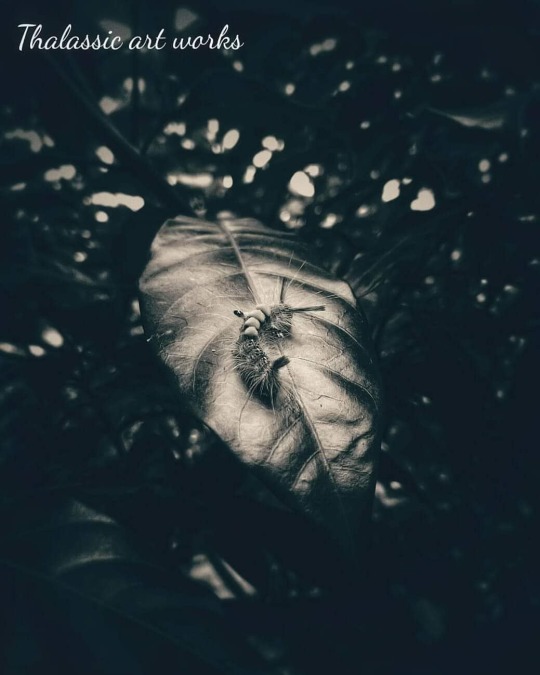
Orgyia detrita, the fir tussock moth or live oak tussock moth, is a tussock moth in the family Erebidae. https://foap.com/users/akshayaiv https://t.me/thalassic_art_works #caterpillar #insects_of_our_world #insectphotography #insectsofinstagram #insectlovers #caterpillarlovers #monochromephotography #monochrome #monochromephoto #monochromelovers #blackandwhitephotography #naturephotography #naturelover #kerala #nature ##insectsphotography #monochrome #photography #thalassic_art_works https://www.instagram.com/p/CJTNpVwDgmU/?igshid=1xrybk3qt1tqd
#caterpillar#insects_of_our_world#insectphotography#insectsofinstagram#insectlovers#caterpillarlovers#monochromephotography#monochrome#monochromephoto#monochromelovers#blackandwhitephotography#naturephotography#naturelover#kerala#nature#insectsphotography#photography#thalassic_art_works
1 note
·
View note
Photo
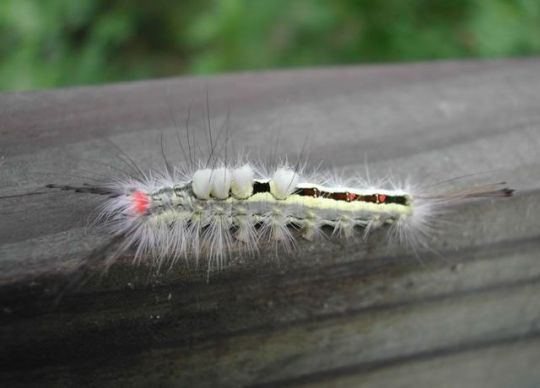
WHITE-MARKED TUSSOCK MOTH
Orgyia leucostigma White Marked Tussock Moth larva (Orgyia leucostigma). Photo: Forestry Archive, Pennsylvania Department of Conservation and Natural Resources, Bugwood.org
Tussock Moth Caterpillars
by Debbie Hadley - ThoughtCo.
Updated January 25, 2017
The Tussock Moth caterpillars are known for their striking tufts of hair, or tussocks. Many species exhibit four characteristic clumps of bristles on their backs, giving them the appearance of a toothbrush. Some have longer pairs of tufts near the head and rear. Judged by looks alone, these fuzzy caterpillars seem harmless, but touch them with a bare finger and you'll feel you've been pricked by fiberglass. A few species, like the Brown-tail, will leave you with a persistent and painful rash.

BROWNTAIL MOTH
Euproctis chrysorrhoea Brown-Tail Moth larva (Euproctis chrysorrhoea).
Photo: Richard Collier - flickr

RUSTY TUSSOCK MOTH
Orgyia antiqua Rusty Tussock Moth larva (Orgyia antiqua).
Photo: USDA Forest Service Archive, USDA Forest Service, Bugwood.org
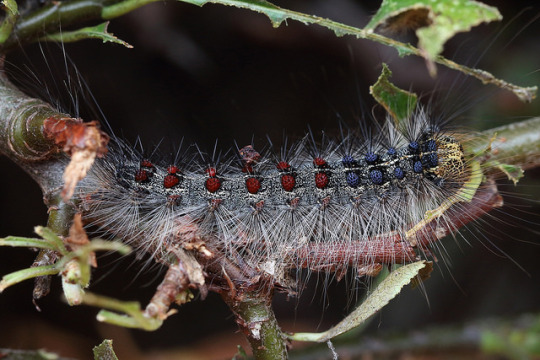
GYPSY MOTH
Lymantria dispar Gypsy Moth larva (Lymantria dispar).
Photo: Phil Kirk - flickr

NUN MOTH
Lymantria monacha Nun Moth larva (Lymantria monacha).
Photo: Louis-Michel Nageleisen, Département de la Santé des Forêts, Bugwood.org
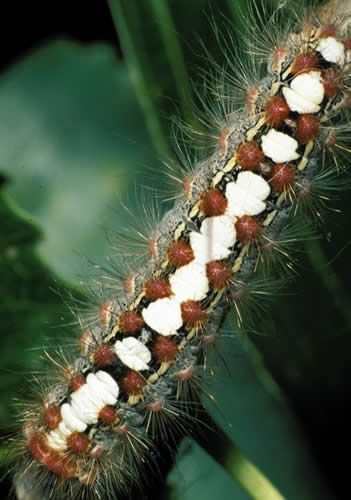
SATIN MOTH
Leucoma salicis Satin Moth larva (Leucoma salicis).
Photo: Gyorgy Csoka, Hungary Forest Research Institute, Bugwood.org

DEFINITE-MARKED TUSSOCK MOTH
Orgyia definita Definite Marked Tussock Moth larva (Orgyia definita).
Photo: Forestry Archive, Pennsylvania Dept. of Conservation and Natural Resources, Bugwood.org

DOUGLAS-FIR TUSSOCK MOTHS
Orgyia pseudotsugata Douglas Fir Tussock Moth larva (Orgyia pseudostugata)
Photo: State & Private Forestry USFS Pacific Southwest Region

PINE TUSSOCK MOTH
Dasychira pinicola Pine Tussock Moth larva (Dasychira grisefacta).
Photo: USDA Forest Service Archive, USDA Forest Service, Bugwood.org
0 notes